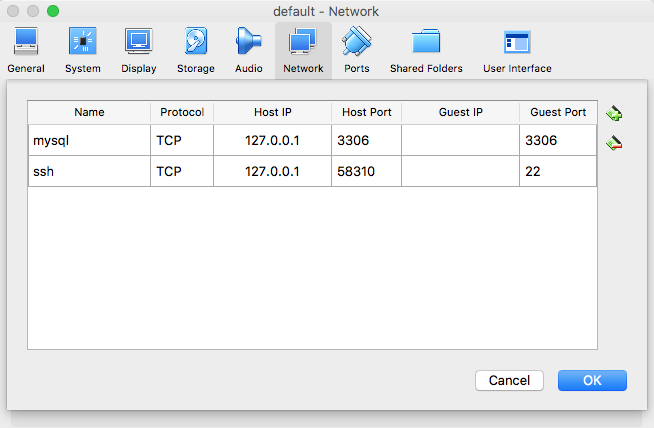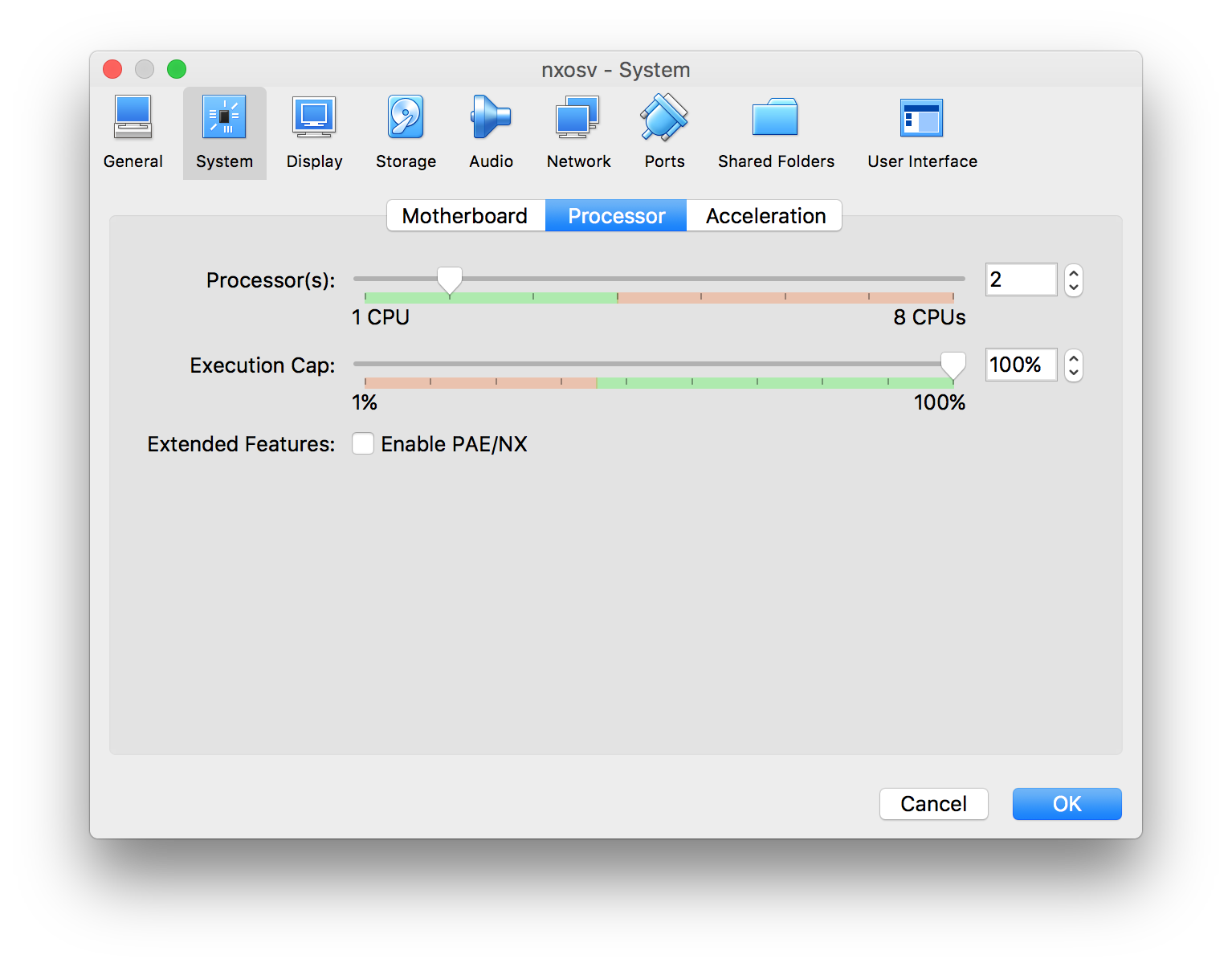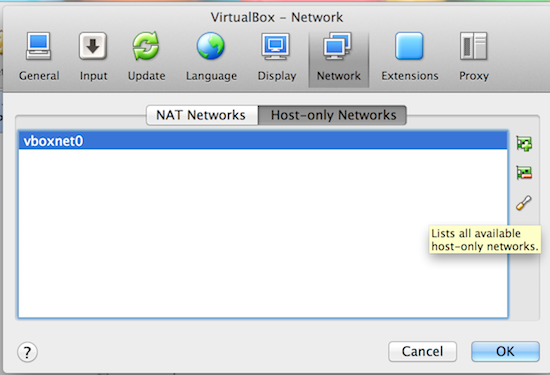- Virtualbox Forward Localhost
- Access Localhost From Virtualbox
- Access Virtualbox From Host
- Virtualbox Web Server
First, open up your VirtualBox Manager GUI. Click the “Tools” button, then from the dropdown menu select “Network”. In the Host Network Manager menu, you should see that a virtual, host-only network has been created for you, named “vboxnet0”. If not, click the “Create” button on the top left corner.
PC name-IP address of VirtualBox host (not the guest) in the form 192.168.1.162:3389 User name-user name on the guest OS Password-password for the guest OS user. On Mac OS (host): Shutdown your VM and do: VirtualBox Settings Network Add (you will get vboxnet0) On a terminal ifconfig will show you new interface vboxnet0. VM's Settings System check 'Enable I/O APIC.' VM's Settings Network Adapter 2 host-only vboxnet0. On Ubuntu (guest): Install OpenSSH Server. You can work on your own LAN DHCP server and decide which IP addresses / MAC addresses can have internet access and which not. An other alternative could be to use an external proxy-server to get internet access and the same will be configured, client-side, only on VMs. There is no option to get VirtualBox managing host OS internet access. On most computer systems, localhost resolves to the IP address 127.0.0.1. Ssh root@127.0.0.1-p 2222. Try to connect from mac to your mac and not to your VM. Try to find the address of your VM and change your command acordingly. NB: if you just want to ssh from your mac to your VM you can add a 'host-only' network adapter to your VM.
During the virtual emulation the probability to share files between virtual machine and host is vital for the end user. Instead of downloading the files in the virtual environment, when the Ethernet-connection is not working properly, it is much easier to transfer the corresponding file objects from host OS to VM or backwards and start using it right at the place. This feature is especially useful when you customize or configure anything and you need access to the file objects anywhere and anytime. In this text note I am going to precisely describe the procedure of sharing files between VirtualBox and host, how to arrange the common method of exchanging file objects and how does the virtual transfer work.
the very start, I should mention, that you may exchange files between VirtualBox VM and host system either in Windows or Linux operational environment, and the methodic is quite similar and almost identical. If you want to transfer some objects from host operational system to the virtual machine, you need to install VirtualBox Guest Additions image disk in the guest VM. This is required for the virtual environment to actually see the appropriate shared files in the host system and to apply it correspondingly. In order to install the described before image disk address to the upper menu of the application and click Devices -> Insert Guest Additions CD Image item. In such a non-intricate way a required installer will be run.
Follow the screen instructions and set up the predefined feature in the guest OS. The setting up routine will take a bit more than a minute from you, but during the walkthrough of the process you will be given strict instructions. After setup is performed, the virtual OS would require the reboot. Thus, you will receive an appropriate notification concerning this.
When the virtual machine would reboot, click the Machine -> Settings item in the guest OS upper menu and select Shared Folders subcategory. Right here you may customize the shared folders, available to the user. You may configure two types of common directories: Transient and Machine. Transient folders are temporary objects which are scheduled to be deleted from view when the virtual environment shuts down or restarts. At the same time, Machine Folders are permanent objects, which will be visible in the constant manner, until they are removed manually from the virtual OS.
If you desire to add a new shared folder to the list, click the Add icon in the right section of the form.
Now the time has come to customize the new added shared folder. In the Folder Path field define the path to the specified common folder on the host OS. At that very moment, the Folder Name field relates to the name of the folder, under which it will be accessible in the virtual guest OS. A bit lower some of the additional settings are presented, like Read Only and Make Permanent checkboxes. By default, the shared folders are given the full access rights, including writing and modifying of the content, but by setting the Read Only checkbox you can restrict the rights of the user, in such a way limiting his possibilities to the allowed level. At the same time, the Make Permanent checkbox puts the corresponding folders to the Machine folders section.
At the ending part a few words about how to access the defined common folder. Kurzweil mark 10 service manual. Open the explorer, unroll a Network section, and inside of it you will notice the “VBOXSVR” shared PC. This is the common folder category, designed by the virtual machine. Open it and you will be able to see all the shared directories as an included content right in there.
In such a way, I could clarify for you a topic “How to share files on VirtualBox?”. This methodic will for sure help to arrange a connection between the virtual machine and the host environment, so feel free to use it anytime and anywhere you need.
Share files between two SO is easy because there are different protocols for sharing resources (NFS, CIFS/SMB/Samba, FTP, …), but sharing files between two PCs with OS Linux based, and one of them as virtualmachine guest of another one is a bit more complicated. Here’s how to do it when we Mac OSX as HOST and CentOS as GUEST:


Mount DVD ISO image in CentOS VirtualBox guest
1.- Previously, I have download DVD ISO image, then I have copied to my Mac OSX Host.
2.- From Virtual Box menu, goes to Devices > CD/DVD Devices and mount selecting CentOS’s DVD ISO image (ISO previuosly added to VBox’s “Virtual Media Manager”).
3.- In CentOS guest now you can see DVD iso mounted as /media/CentOS_5.5_Final
4.- You can install packages directly off the mounted DVD ISO. Now, modify /etc/yum.repos.d/CentOS-Media.repo file, enter:
5.- Make sure enabled is set to 1:
6.- Save and close the file. To install packages from only DVD media repo, do this:
Notes:
* –disablerepo=*: disable all yum repo
* -y: assume yes to any question which would be asked
* –enablerepo=c5-media: enable c5-media repo
Install Virtual Box Additions in CentOS guest
Before anything, It is necessary install some packages as compiler gcc, kernel libs and sources.
1.- Install the following packages with CentOS DVD ISO image mounted:
2.- Unmount CentOS DVD ISO image and mount Virtual Box Guest Additions in your CentOS guest:
3.- Restart CentOS guest
4.- Now, install VBoxGuestAdditions in CentOS guest:
5.- Restart CentOS guest again

6.- Now you could use special functionalities as resize the guest windows, share files, etc…
Share files beetwen Mac OS X as Host and CentOS as Guest
Virtualbox Forward Localhost
1.- In your Host Linux box:
2.- In main menu of your Linux Guest’s Virtual Box:
- Go to Devices > Shared Folders …
- In popup, add shared folder and select Host’s folder (/Users/chilcano/files2share), set up a name as files2share and make permanent.
3.- In your Guest Linux box opens a terminal window and create a new directory where you’ll mount shared folder
4.- In this terminal, enter the id command and look the output. We will use uid and gid:
Access Localhost From Virtualbox
5.- Now, we will mount shared folder from Host to Guest. From terminal in Guest Linux:
Make the Mounted Share permanent
You can make the shared folder mount automatically each time you start the CentOS guest by making an entry in /etc/fstab.

1.- From the CentOS guest edit fstab:
2.- Add a line at the bottom of file, and that looks like this:
3.- Verify mounted folder
In Mac OS X (host):
In CentOS (guest):
Access Virtualbox From Host
4.- End.
References:
- CentOS: Install Packages Via yum Command Using DVD / CD as Repo
http://www.cyberciti.biz/faq/centos-linux-install-packages-from-dvd-using-yum/ Implementing virtualbox shared folders between a Mac OS X host and Fedora guest
http://davidherron.com/content/implementing-virtualbox-shared-folders-between-mac-os-x-host-and-fedora-guest
http://forums.virtualbox.org/viewtopic.php?t=4960&highlight=install+guest+addition
* How to install Guest Additions in CentOS 5.1
- Share Folders Between a Linux Host and Linux Virtual Machine on VirtualBox
http://tuxtweaks.com/2009/06/share-folders-linux-host-linux-virtual-machine-virtualbox/
Virtualbox Web Server
Posted in Open Source, Security
